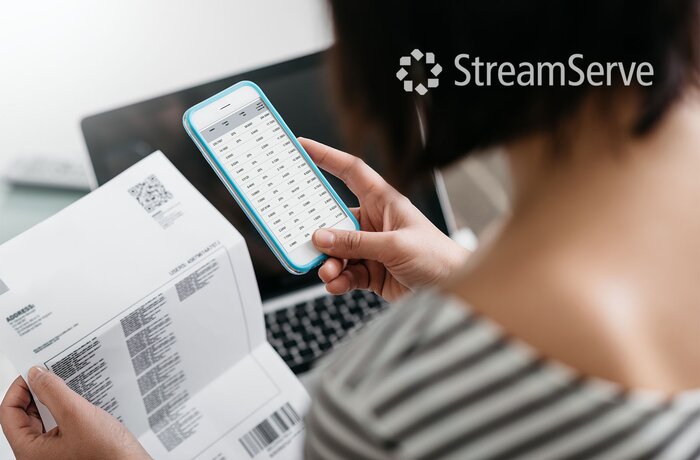How to Create Accounting Software
ScienceSoft brings 17 years of experience in financial software development to help companies from 30+ industries engineer robust accounting solutions.
Accounting Software Development in Brief
Accounting software development is a way to obtain a digital solution that automates operations like bookkeeping, accounts payable, accounts receivable, tax management, and financial reporting.
Custom accounting software development lets introduce accounting automation capabilities tailored to each company’s specific needs. It helps achieve smooth integration with legacy tools and simplifies compliance with all the necessary accounting standards, including local GAAP.
According to ScienceSoft’s domain experience, custom accounting software can automate up to 90% of core accounting tasks and bring up to 290% ROI.
Key Steps to Develop Accounting Software
- Assess the feasibility of custom development.
- Create a high-level concept of your accounting app.
- Plan the development scope and resources.
- Design software logic, architecture, UX/UI, and tech stack.
- Develop and test your accounting solution.
- Establish the necessary integrations.
- Migrate your accounting data to the new system.
- Set the software live and conduct user training.
Development timelines: 8–15+ months for a custom accounting system.
Investments: $200,000–$700,000+, depending on solution complexity. Use our free calculator to estimate development costs for your case.
Sample Accounting Software Architecture
An accounting solution built on modular architectures like SOA or microservices is scalable and can be easily updated with new features. For cloud accounting apps, ScienceSoft suggests adding auto-scaling serverless functions: they are cheap to deploy and help effectively automate rule-based recurring tasks, e.g., report generation or payment processing.
Here is a ScienceSoft’s sample modular architecture that illustrates key accounting software components and data flows. It also shows how the modules can be evolved independently of other modules.

Accounting Software Development Steps
1.
Feasibility study
This stage aims to compare the cost and ROI of possible approaches to implementing accounting software in the context of your business needs. Some common scenarios to consider are:
- Building a custom accounting system from scratch.
- Implementing a market-available accounting suite.
- Implementing a ready-made suite to cover core accounting functionality and building custom apps or modules to automate your specific processes (e.g., filing regional taxes; investment accounting; triggering payments based on non-standard priority rules).
- Evolving your existing homegrown accounting tool with new features. Feasibility assessment in this scenario involves software audit to evaluate the depth of technical debt (the costs of rework).
The choice of custom vs. off-the-shelf accounting software depends on the specifics and complexity of your accounting tasks and your future plans for the solution (e.g., you may want to add advanced features later on). Other factors that may affect the decision are the need to achieve compliance with specific accounting standards (e.g., IFRS 17 for insurance) and the accounting team size (per-user subscription fees for an OOTB product may be high for large teams). Use ScienceSoft's interactive questionnaire to get a quick idea of which option best suits your case.
2.
Accounting software conceptualization
This step will help you consolidate requirements for the accounting software and answer the following questions:
- What accounting areas will your software cover: the entire flow or particular processes, e.g., A/R, revenue management, payments?
- What core and advanced functional capabilities will your software include?
- Which platforms (web, desktop, mobile) will your accounting software support?
- Will your software provide customized interfaces for various accounting roles?
- What corporate and third-party systems will you need to integrate with your solution to achieve cohesive accounting automation?
When conceptualizing the accounting app, business analysts interview the client’s stakeholders and subject matter experts (bookkeepers, reporting specialists, etc.), explore the company’s accounting processes and data flows, and study the available IT documentation. This gives them a complete picture of the client’s requirements for the accounting solution. At the same time, compliance experts map case-relevant regulatory rules for the solution. Based on the gathered information, business analysts create functional specifications that lay the ground for project planning and software design.
3.
Project planning
An accurate project roadmap will help you adequately plan resources, proactively address risks, and establish a predictable development flow for you project. ScienceSoft’s PMs recommend to include the following in your project plan:
- Deliverables, scope, and a detailed work breakdown structure bound to the chosen development model.
- KPIs to measure the accounting software quality and project health. Feel free to apply the metrics ScienceSoft commonly uses in its development projects.
- Development team composition, responsibilities, and collaboration touchpoints. Consider crafting the RACI matrix to simplify control over the collaborative workflows.
- Project time and cost estimates. The accuracy of baseline calculations will largely depend on the scope precision and the maturity of your (or your vendor’s) estimation practices.
- A strategy and plan to mitigate potential risks. ScienceSoft’s sample risk matrix may serve as your go-to framework for risk evaluation and triaging.
However precise and grounded your baseline estimates may seem, avoid setting them in stone. At ScienceSoft, we re-estimate the cost at each project stage to improve number reliability and maintain realistic budget expectations. Commonly, we prepare an early top-down quote to show approximate project investments, tune the estimates for fixed-scope tasks (consulting, design) at the planning stage, and deliver 95%+ accurate bottom-up estimates for defined scope units during development.
4.
Technical design
This step involves making a range of technical decisions that will affect the accuracy, capacity, and usability of your accounting solution:
- Designing accounting app logic, including custom financial formulas.
- Designing a secure and scalable architecture of accounting software.
- Architecting integrations between the accounting software and your back-office and external systems. Explore ScienceSoft’s dedicated guide to understand common app integration patterns and weigh their benefits for your case.
- Designing role-specific UX and UI.
- Choosing the tech stack that will address non-functional requirements for the accounting solution and enable software adaptability to future business needs.
Accountants are known for their conservative approaches and tech choices, and their eagerness to adopt new software largely depends on how familiar the app’s user journeys and interfaces are. Frankly speaking, unless peculiar visual style is your major competitive advantage, investing in novel UX and UI design for accounting software is unfeasible. Offering straightforward experiences and intuitive screens closely resembling good old spreadsheets would have way more positive impact on user adoption.
5.
Development and quality assurance
This is the stage where the design concept gets coded into the back end and front end of your accounting solution. The cost of error and vulnerability in accounting software may be extremely high, so it’s best to make sure each delivered component is carefully tested for accuracy and security. ScienceSoft recommends running unit tests and code reviews in parallel with development to quickly spot issues and fix them before production, where debugging can incur much higher costs.
Aim at 90%+ overall unit test coverage and provide 95%+ coverage for back-end components dealing with calculations, payment routing, and fraud detection. Based on our experience, test coverage below these benchmarks doesn’t ensure sufficient logic validation and results in frequent defect leaks.
6.
Integration
If you develop accounting software for corporate use, at this step, you need to implement integrations with the necessary back-office systems (CRM, SCM, FP&A, etc.) and third-party data sources (e.g., bank accounts, financial data marketplaces). Rigorous integration testing will ensure smooth and secure connection between the systems.
7.
Data migration
Moving data from your previously used accounting tool to the new system is one of the riskiest project areas. Inconsistent data formats, broken business rules, data corruption, and operational downtime are only few obstacles that may arise if migration is organized and conducted improperly.
Our engineers recommend to back up source data, employ proven automated migration scripts, test 100% of custom manual scripts prior to use, and vet every chunk of the migrated data for accuracy to avoid data migration issues. You can also split migration into several sessions and run them in non-working hours to secure time for unplanned re-migration and prevent accounting workflow disruptions.
8.
Accounting software rollout
After the migration and testing procedures are finalized, you need to configure a cloud or an on-premises infrastructure for your accounting software and then you can set the ready-to-use solution live.
In similar projects, at this stage we typically prepare detailed user manuals and offer remote or hybrid user training to help accountants master the new app quicker.
When drafting an SLA with your software vendor, make sure you are on the same page about what post-launch services are included. For example, ScienceSoft’s development service covers solution maintenance and user support for the first 1–3 months after delivery. During this time, we can either gradually transfer knowledge to your support team, or arrange a team of our engineers to handle continuous software maintenance, evolution, and L1–L3 help desk – all as separate services.
These Success Stories Will Likely Be Relevant to Your Case
15 results for:

Azure-Based Accounting Automation Product for 75,000 SMBs
ScienceSoft designed and built future-ready, user-friendly cloud accounting software for a well-known accounting product provider. With the new powerful SaaS, the Client got the opportunity to improve user satisfaction, outperform competitors, and optimize IT costs.

Accounting Module Revamp in 3 Weeks for a Home Healthcare Delivery SaaS
In just three weeks, ScienceSoft audited the accounting module of a web-based home healthcare delivery app. Our expert team detected multiple flaws in the accounting logic and provided actionable recommendations on how to address them.

AI-Based Software Product for Fully Automated Invoice Processing
The solution automates invoice data capture, validation, and recordkeeping and submits valid invoices for payment, ensuring faster and more accurate invoice processing. The software offers intuitive user experiences and performs stably under heavy load.

Custom Billing Platform for Secure, Scalable and Auditable Ecommerce Payments
A scalable custom platform automates cross-border billing and payment processing for a leading European marketplace. The solution enables quick, easy, and safe billing workflows and offers a lower TCO compared to third-party tools.

Invoice Management Software for a Mobile Operator with 5M Clients
A case study of delivering a tailored StreamServe-based invoice management solution for the 5-million subscriber telecom provider.
How Accounting Software Integrates into Your Finance Workflows
At ScienceSoft, we see accounting software as a single source of truth for company-wide financial transactions that gives the basis for accurate financial planning and reporting. To automate financial data consolidation and sharing, we integrate accounting solutions with the following systems:

- Bank accounts – to quickly submit and reconcile financial transactions.
- Treasury software – to automatically create journal entries on cash flow, investment, and financing transactions in the general ledger and subledgers.
- CRM – to auto-populate customer data, payment terms, price and quantity of ordered items when generating invoices.
- Procurement system – to automate purchase order recording in the A/P ledger.
- HR management software – to accurately calculate payroll.
- Inventory management software – to accurately record the value of raw materials, in-progress inventory, and produced goods.
- Asset management software – to calculate and report fixed asset depreciation.
- Financial planning and analysis software – to provide data for financial performance analytics, forecasting, and budgeting.
- A business intelligence (BI) solution – to leverage accounting data in enterprise-wide analytics.
Accounting Software Development Costs
Based on ScienceSoft’s experience, the cost to develop accounting software may vary from $200,000 to $700,000+, depending on the solution’s complexity, the scope of integrations, operational requirements (scalability, security, compliance, etc.), and UX/UI specificity.
Sample cost ranges*
$200,000–$400,000
A custom accounting solution that provides a basic feature set (general ledger, A/R, A/P, revenue recognition, payroll, tax management, financial reporting) and integrates with 1–3 corporate systems.
$300,000–$600,000+
A core accounting suite that relies on advanced technology for process automation, e.g., offers invoice processing using computer vision, AI-supported financial close, or blockchain-based bookkeeping.
$500,000–$700,000+
A large-scale enterprise system that offers basic accounting functionality, covers multi-entity features (multi-book entries, netting, POBO/COBO, etc.), and integrates with 4–7 back-office and external systems.
* The provided estimates are not ScienceSoft's official pricing for accounting software development. We calculate the cost of each project individually based on the client’s specific requirements.
Proven ways to optimize costs
Mind that there’s always room for cost optimization without trading off solution quality. Here are some of ScienceSoft’s best practices to cut the budget:
Employing modular architectures to reuse logic components and enable parallel development of accounting modules.
Using open-source APIs, pre-built logic and UI components, OOTB deployment scripts, etc. to reduce the share of costly custom coding.
Applying Agile methodologies to speed up releases and cut development efforts.
Cloud resource rightsizing based on module-specific performance and availability requirements.
What makes ScienceSoft different
We achieve project success no matter what
ScienceSoft does not pass mere project administration off as project management, a practice that's unfortunately common in the market. We drive projects to their goals, mitigating risks and overcoming constraints.




